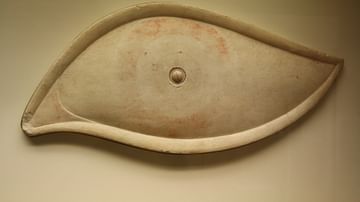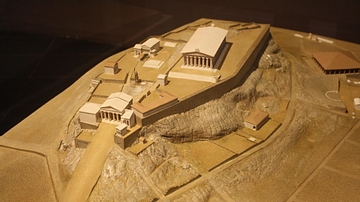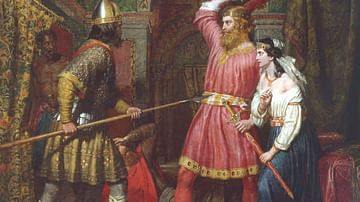Search Images
Browse Content (p. 1613)

Image
East Roman Empire, 6th century CE
East Roman Empire, 6th century CE, showing the territories of the Avars, Goths, Franks, Lombards, Saxons, Thuringians, Slavs.

Image
Trireme Eye
A marble eye which was once attached to the prow of a trireme in order to ward off evil. Traces of the original paint can still be seen. (Archaeological Museum of Piraeus)

Image
Kleroteria
Stone kleroteria; a device that randomly dispensed black or white tokens which the Athenians used to select citizens for jury service. (Agora Museum of Athens)

Image
Ostraka for Themistocles
Pottery ostraka identifying Themistocles, 482 BCE. These were used in Athens to vote a particular citizen to be ostracised from the polis. From a well on the north slope of the acropolis of Athens. (Museum of the Ancient Agora, Athens)

Image
Model of Athens' Acropolis
A model of the Athenian acropolis in the 5th century BCE. The monumental Propylaea gives access to the Parthenon (centre) and the Erechtheion (left side). (Acropolis Museum, Athens)

Image
Hemispherical Sundial
A Roman period sundial of the Greek hemispherical type. (Archaeological Museum of Piraeus)

Image
Assassination of Alboin (detail)
The Assassination of Alboin, Charles Landseer, 1856 CE, Peter Nahum At The Leicester Galleries.

Image
Alboin from the Nuremberg Chronicle
Alboin from the Nuremberg Chronicle, 1493 CE, Bavarian State Library

Image
The Assassination of Alboin
The Assassination of Alboin, Charles Landseer, 1856 CE, Peter Nahum At The Leicester Galleries.

Image
Alboin and Rosamunde
Alboin and Rosamunde, School of Rubens, 1651 CE, Kunsthistorisches Museum, Vienna